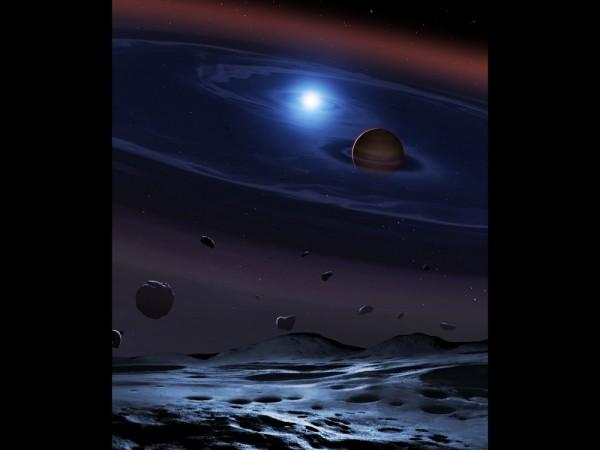
Star Wars fans rejoice! A Tatoonie-like planetary system has been discovered by astronomers and they suspect the presence of planetary debris in the system.
Also Read: SpaceX to fly 2 passengers to moon on Dragon human spacecraft, in 2018
These findings were made by researchers from the University College London (UCL) with the help of the Gemini Observatory South telescope and the European Southern Observatory Very Large Telescope, located in Chile.
This planetary system comprises two stars -- a brown dwarf and a white dwarf -- which are encircled by rocky debris.
These stars orbit each other approximately once every two hours. The system is around 1,000 light years away and called SDSS 1557.
What makes this dual-star system rare is that all exoplanets orbiting a system with two stars discovered so far are found to be Jupiter-like gas giants, which are formed in their solar system's icy regions; but this is the first time a Tatooine-like terrestrial exoplanet that orbits two stars may be found in the system, a UCL statement revealed.
"Building rocky planets around two suns is a challenge because the gravity of both stars can push and pull tremendously, preventing bits of rock and dust from sticking together and growing into full-fledged planets. With the discovery of asteroid debris in the SDSS 1557 system, we see clear signatures of rocky planet assembly via large asteroids that formed, helping us understand how rocky exoplanets are made in double star systems," said the lead author Dr Jay Farihi from UCL's Physics & Astronomy department.
The brown dwarf star in the system is around 60 times more massive than Jupiter and the white dwarf is similar to our Sun, but possesses a burn-out core
Researchers from UCL said that the space dust seems rocky, which points towards the existence of a Tatoonie-like terrestrial planet.
The researchers found the presence of high metal content, containing silicon and magnesium in the SDSS 1557 system. This was found after some debris flew into the surface of the star from orbit.
"We know of thousands of binaries similar to SDSS 1557 but this is the first time we've seen asteroid debris and pollution. The brown dwarf was effectively hidden by the dust until we looked with the right instrument", stated co-author Dr Steven Parsons, from the University of Valparaíso and University of Sheffield.
"But when we observed SDSS 1557 in detail we recognised the brown dwarf's subtle gravitational pull on the white dwarf," Dr Parsons added.
The Science and Technology Facilities Council and the European Research Council funded this research, which is also published in the journal Nature Astronomy.














